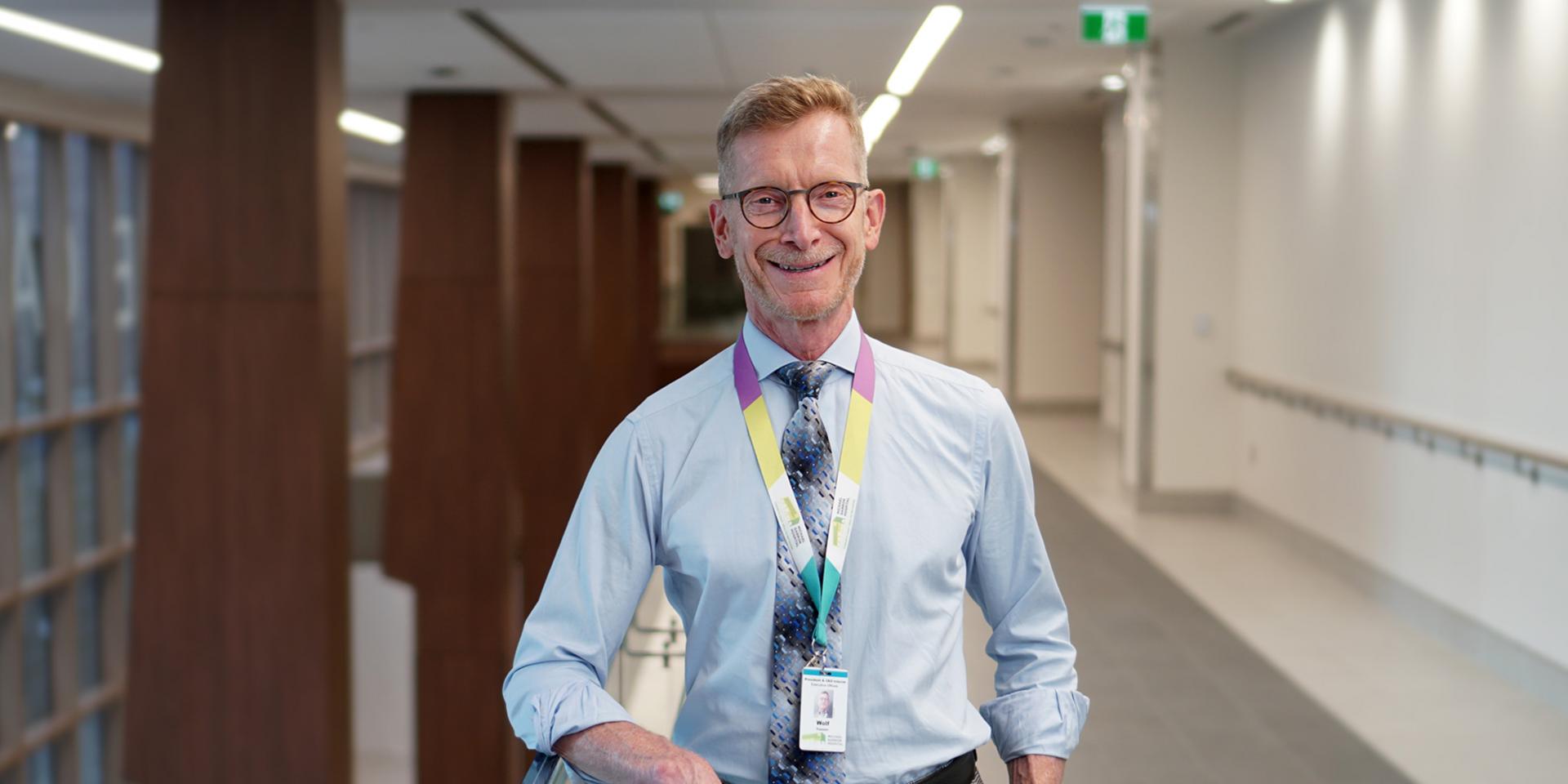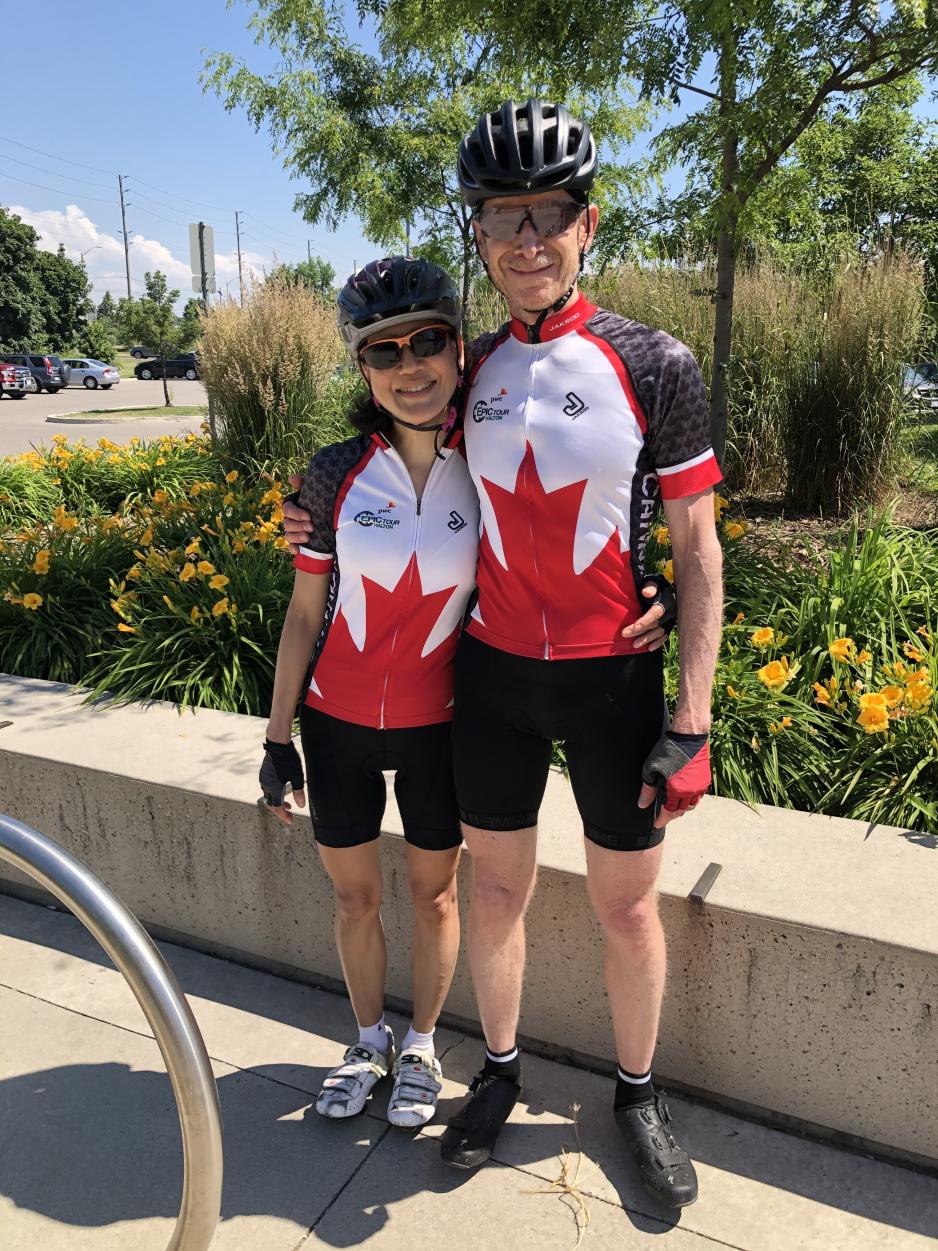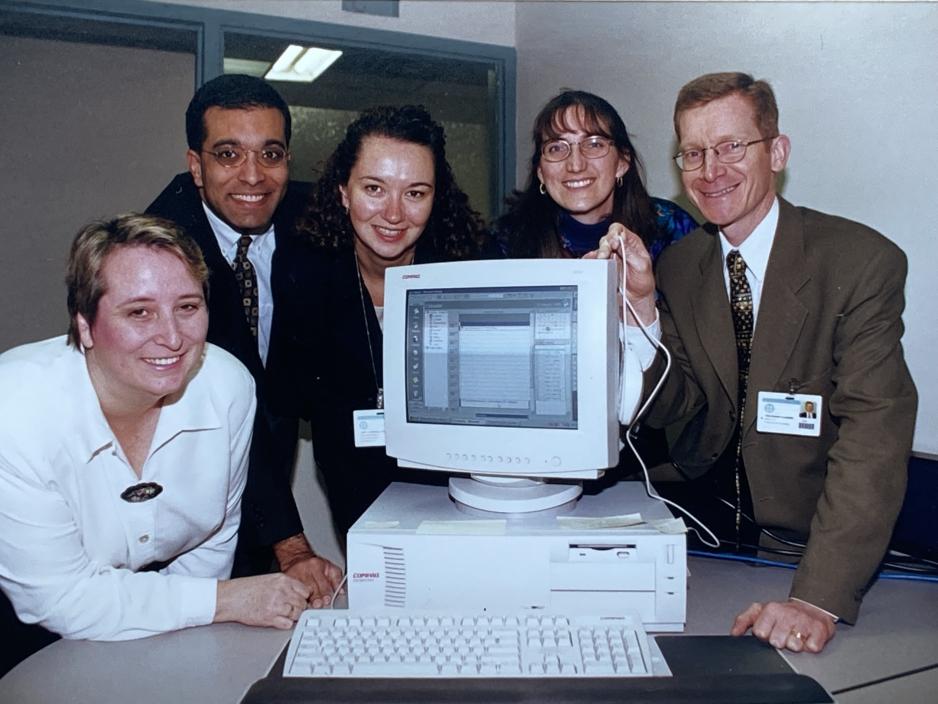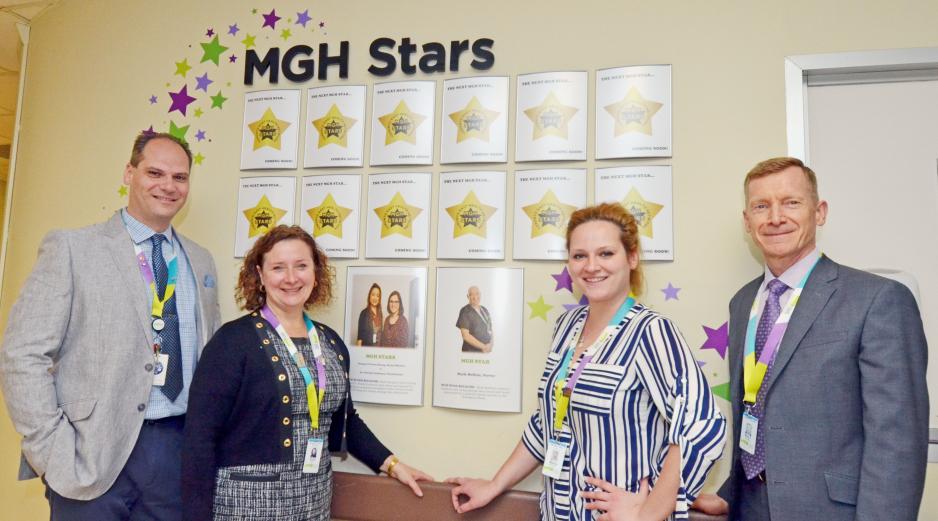How would Wolf Klassen, President and CEO, Interim at Michael Garron Hospital (MGH), describe his first two weeks in his new role? “Energizing.”
Wolf was previously Vice President of Program Support at MGH. He has worked in various leadership roles at the hospital for more than 25 years and is a familiar face to many staff and teams in the hospital community.
As President and CEO, Interim, Wolf is now applying his strong and poised leadership skills to support a number of priorities at MGH while the hospital’s Board of Directors initiates a comprehensive search for MGH’s next permanent President and CEO.
Learn more about Wolf, including his leadership style, what he’s most looking forward to in his interim role and the special family connection he has with MGH.
Tell us about yourself!
I’ve been at MGH since 1995 and am the longest serving member of the hospital’s Executive Team. Before I was appointed President and CEO, Interim, I was the Vice President of Program Support and have worn a number of other hats at MGH.
Outside of work, I’m a husband and a father to two adult children. I’m also an avid runner and cyclist and, during the pandemic, have taken up top-rope rock climbing. (One of my goals over the next year is to tackle a route with a classification of 5.11, which is described as “hard to difficult”!)
I’m passionate about mentoring the next generation of healthcare leaders and am an adjunct professor at my alma mater, the University of Toronto’s Institute of Health Policy, Management and Evaluation. I also founded MGH’s Administrative Residency Program 18 years ago, which has provided student placement and learning opportunities to over 100 Master’s students.
I’m very excited to be taking on the role of President and CEO, Interim at MGH and am grateful for the opportunity. I’ve supported six CEOs during my time at the hospital and feel well prepared for this position.
How would you describe your leadership style?
My leadership style starts from a place of gratitude. I’m known as a “steady hand” at MGH and would describe my leadership style as calm, thoughtful and measured. I’m here to serve, listen to our stakeholders and build relationships with our teams and community.
While at MGH, I’ve had the opportunity to demonstrate this leadership style in many areas, particularly during times of crisis. For example, during the SARS epidemic in 2003, I was asked to lead the Command Centre at Scarborough Health Network’s Birchmount Hospital, previously known as Scarborough Grace Hospital. This was ground zero for SARS in Toronto at the time.
I was able to bring the lessons I took away from there and apply them to MGH’s response to COVID-19. Working together with East Toronto Health Partners (ETHP), our Ontario Health Team, we’ve been able to deliver an integrated, community-based response to the virus that has helped protect our most vulnerable communities.
You’ve been at MGH for more than 25 years. What makes this organization so special?
MGH is a community teaching hospital that exemplifies the term community in every aspect. Not only have we built a community within our walls – where it’s not uncommon for our staff to smile and greet one another in the hallways – but we understand that, as a hospital, we are part of something bigger.
We understand improving care for everyone is a collaborative effort and must include partnering with other healthcare and social services agencies across sectors, as well as the people who receive care: patients, caregivers and community members. Ensuring these voices are at the table helps us ensure the care we provide is as accessible, inclusive and equitable as possible.
My mother was a longtime resident of East Toronto and came to MGH many times to get care. She passed away this summer at the age of 97. I’m so thankful MGH was able to provide her the care she needed close to home.
Every day, I’m inspired by the incredible work our hospital does to address the diverse needs of our community. And I can’t help but to think how proud my mother would be to know I’m now taking on this leadership role at MGH.
What are your priorities over the next year to help advance MGH’s vision?
Our vision is to “Create health. Build community.” This means providing the best, most patient-centred care possible to improve the health of East Toronto.
There is no “end state” when it comes to this process. Ensuring inclusive, equitable and compassionate care for all is an ongoing journey that requires us to build on evidence-based practices and frameworks, while also looking for opportunities to innovate wherever possible.
Our teams will have the opportunity to further innovate when the Ken and Marilyn Thomson Patient Care Centre opens to patients this winter. As President and CEO, Interim, it’s my job to ensure a safe and smooth transition for our staff and patients into this new building, which is the centerpiece of the largest redevelopment project in MGH’s history.
My other priorities over the next year include refreshing MGH’s Strategic Plan, which will guide our organization’s work over the next two to three years, including our COVID-19 response and health system recovery.
I also want to focus on mentoring our hospital staff and leaders to ensure they have the tools they need to succeed. I want to be here to support, listen and enable our teams to continue doing the great work they do.
What are you most looking forward to in your new role?
I’m most looking forward to serving such a vibrant community and hospital – one I am very familiar with and where I’ve built many relationships over the years. I want to continue establishing MGH as a place our community can trust to get the kind of care they want and need.
I’m also excited to support the opening of the Thomson Centre. This is a once-in-a-lifetime opportunity that will enhance and showcase the care MGH provides to the community. I feel honoured and privileged to be part of this work and to be collaborating with our teams and partners on this.
I’m looking forward to continuing to mentor staff and leaders at MGH, whether it be administrative residents, participants of our Emerging Leaders Program or others. By nurturing aspiring healthcare professionals early on, we can help ensure a healthy, robust and diverse workforce both on and behind the frontlines for years to come.



